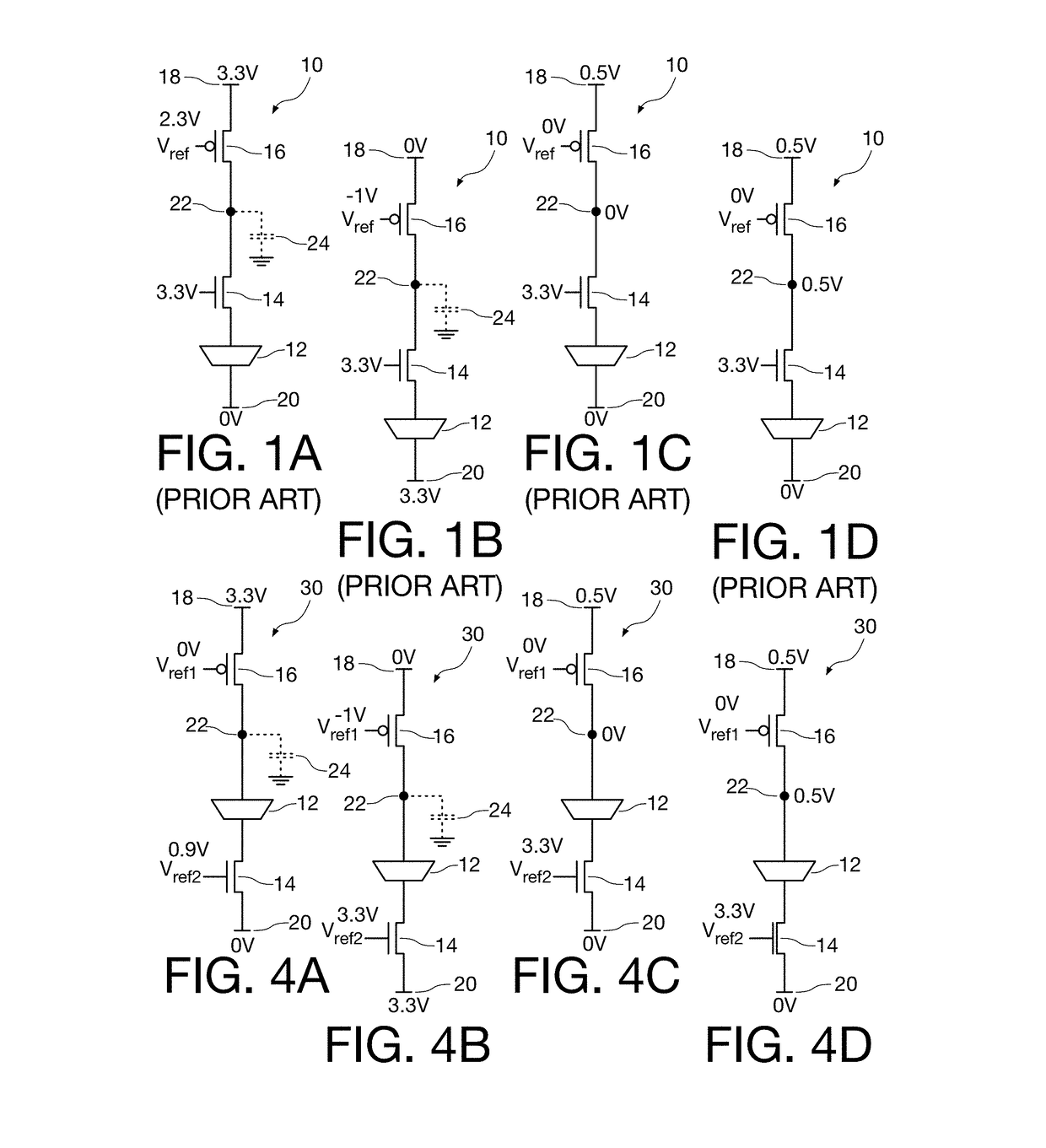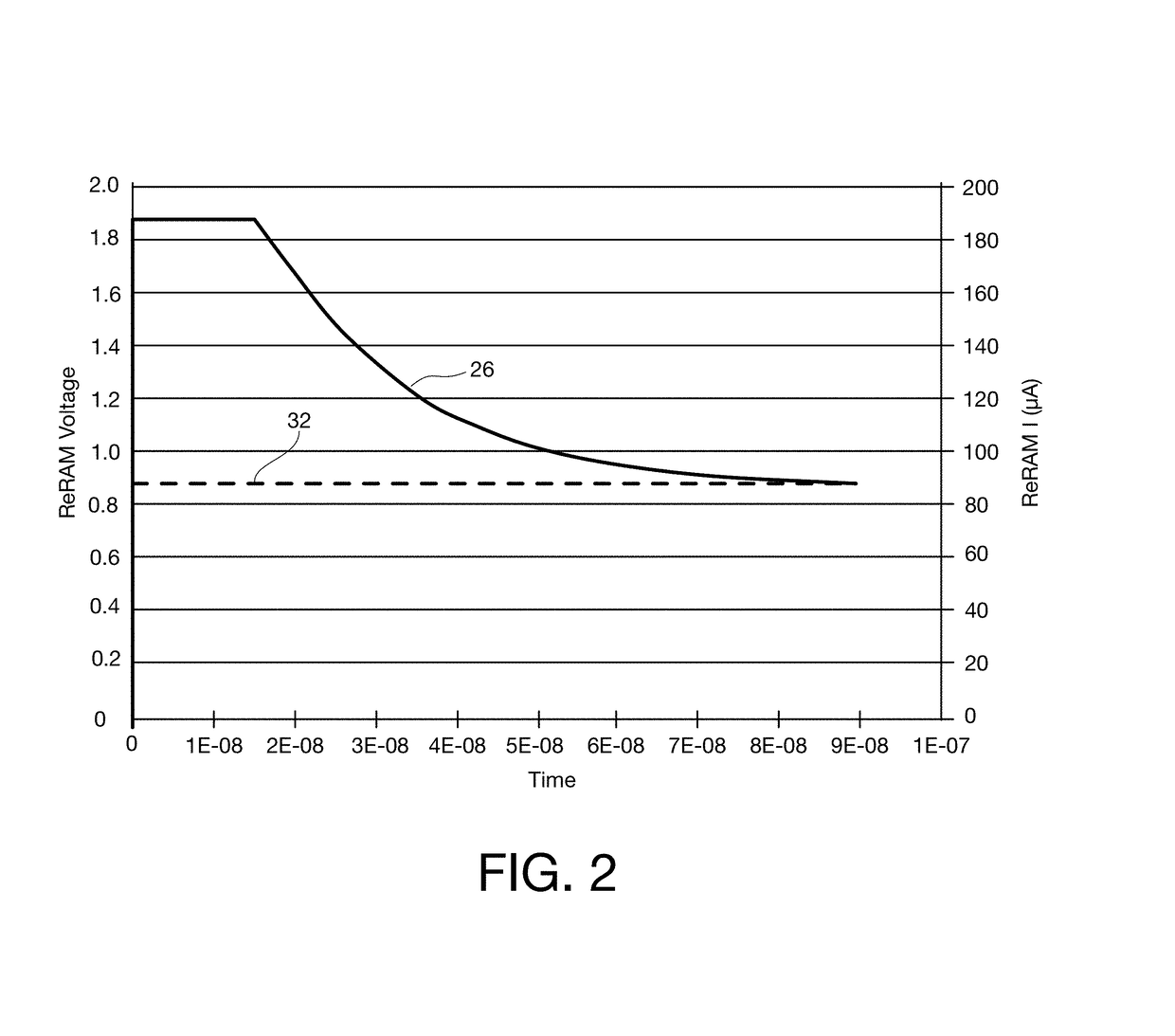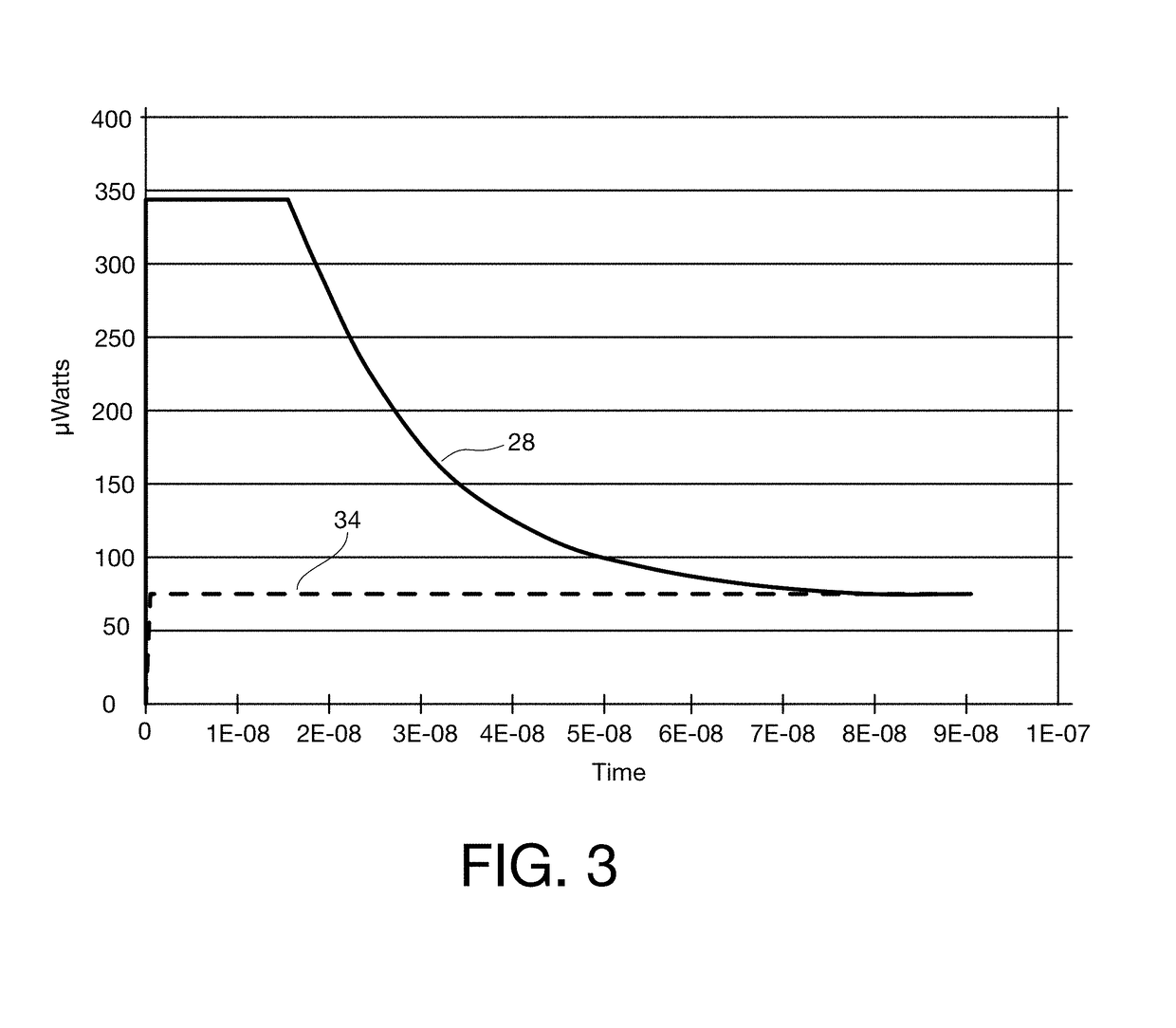Circuitry and methods for programming resistive random access memory devices
a random access memory and circuit technology, applied in semiconductor devices, digital storage, instruments, etc., can solve problems such as limiting the capacitive dump spike curren
- Summary
- Abstract
- Description
- Claims
- Application Information
AI Technical Summary
Benefits of technology
Problems solved by technology
Method used
Image
Examples
Embodiment Construction
[0039]Persons of ordinary skill in the art will realize that the following description of the present invention is illustrative only and not in any way limiting. Other embodiments of the invention will readily suggest themselves to such skilled persons.
[0040]Referring now to FIGS. 4A through 4D, a 1T1R ReRAM memory cell 30 is depicted with various potentials applied to program, erase, and read the memory cell. Like ReRAM memory cell 10 of FIGS. 1A through 1D, ReRAM memory cell 30 includes ReRAM device 12, n-channel access transistor 14 and p-channel sense transistor 16 connected between bitlines 18 and 20. P-channel sense transistor 16 is connected between ReRAM device 12 and bitline 18, however n-channel access transistor 14 is advantageously connected between ReRAM device 12 and bitline 20. As is well known in the art bitlines 18 and 20 and the gates of transistors 14 and 16 may be selectively coupled to appropriate voltage potentials for programming, erasing, and reading the memo...
PUM
 Login to View More
Login to View More Abstract
Description
Claims
Application Information
 Login to View More
Login to View More - R&D
- Intellectual Property
- Life Sciences
- Materials
- Tech Scout
- Unparalleled Data Quality
- Higher Quality Content
- 60% Fewer Hallucinations
Browse by: Latest US Patents, China's latest patents, Technical Efficacy Thesaurus, Application Domain, Technology Topic, Popular Technical Reports.
© 2025 PatSnap. All rights reserved.Legal|Privacy policy|Modern Slavery Act Transparency Statement|Sitemap|About US| Contact US: help@patsnap.com



